Already in the reform era, it was suggested to create a park in Pest or Buda, which will help to arouse interest in the natural sciences in the bourgeoisie but will also serve as a pleasant place for entertainment. However, due to the events of the Hungarian Civic Revolution and War of Independence of 1848–1849, the issue of the foundation was pushed into the background for a long time.
It was not until 1856 that the topic came back on the agenda, when József Gerenday, a doctor and botanist, the director of the Füvészkert, and Ágoston Kubinyi, the director of the Hungarian National Museum, called for the establishment of the zoo. However, neither the scientific bodies nor Pest were able to fund the initiative; the patrons were not crowding, and many feared that the zoo affair might be seen by Vienna as some kind of political organisation.
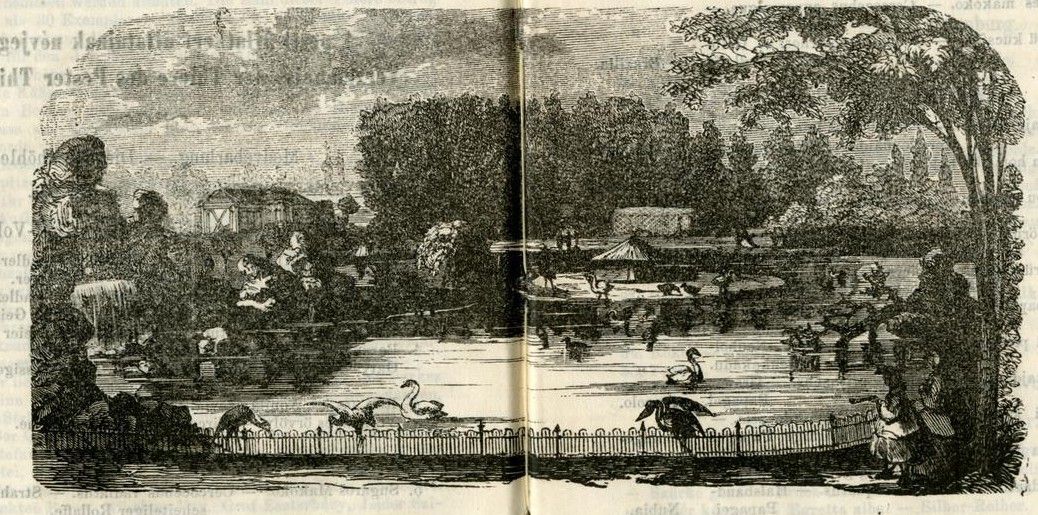 Graphic representation of the Pest Zoo in 1866 (Source: FSZEK Budapest Collection)
Graphic representation of the Pest Zoo in 1866 (Source: FSZEK Budapest Collection)
Thus, it was not until 1862 that the committee dealing with the establishment of the future Pest Zoo was formed at the general meeting of the Royal Hungarian Society of Exact Sciences, and then in 1863 they formulated their petition requesting an area from the city of Pest. They had to wait another year for the approval of the Royal Hungarian Council of Governors and for Pest to designate an area of 31 jugerum and 600 square-fathom in the City Park for the Zoo.
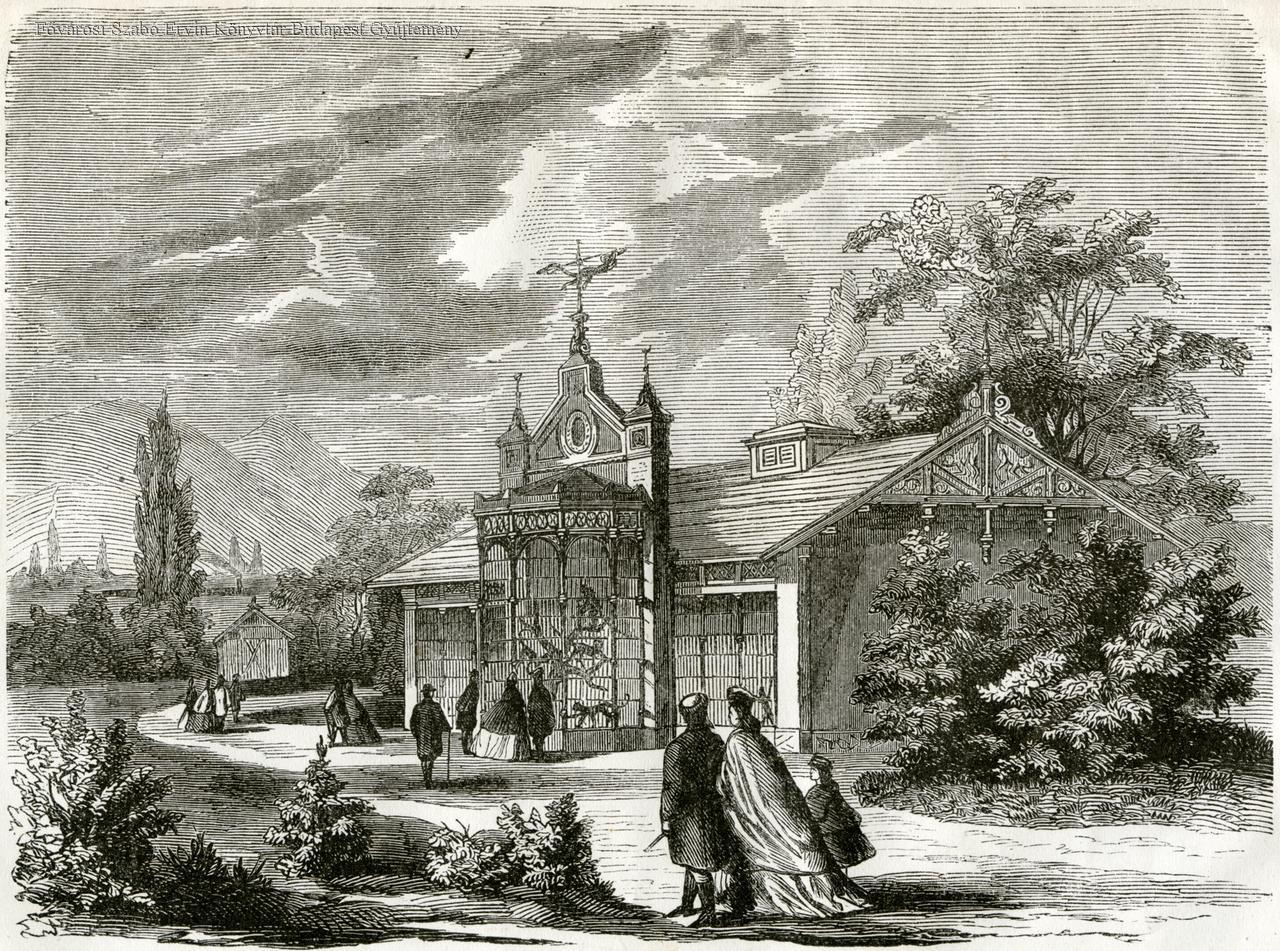
The former buildings of the Pest Zoo were designed by architects Antal Szkalnitzky and Henrik Koch Jr. The monkey house was the largest and most expensive building. Graphics by Károly Rusz (Source: FSZEK Budapest Collection)
The Zoo Public Limited Company (Állatkerti Részvénytársulat) was founded for financing it in June 1864. Among the shareholders, in addition to the founding scholars, there were also a large number of aristocrats and representatives of the bourgeoisie. One of the first major contributors was Countess Antónia Zichy, the widow of Lajos Batthyány.
The construction of the zoo began in the summer of 1865, with the design of the buildings and animal houses entrusted to Antal Szkalnitzky and Henrik Koch Jr., who prepared the plans free of charge. The walkways and park parts were designed by Chief Gardener Petz Ármin. The building permits were obtained by the public limited company in April 1865, and they asked master-builder József Pucher, locksmith István Kern and carpenter István Strohoffer to construct the buildings. During the construction, the purchase of animals has already started, mainly from pet dealers and other zoos, but they received gifts as well. Franz Joseph, for example, donated 34 animals to the future Pest Zoo.
Finally, on 9 August 1866, everything was ready for the opening, of which the newspaper Sürgöny reported on 11 August 1866:
“- In keeping with the announced program, the Pest Zoo ceremoniously opened on the 9th of August after noon. In addition to the numerous guests who were present and invited, the ceremony was highlighted by the charming appearance of His Excellency Baron Pál Senyey and his wife. The ceremony began with the opening speech of János Xantus, briefly listing the difficulties this company had to deal with; but some business-friendly places, namely the city of Pest, which had a 32-acre plot of land in the city park without any wages, only paying one gold a year for the sake of retaining ownership — for thirty years; and Count János Pálffy, who built a magnificent hall for the orchestra at his own expense, and with the help of several encouraged participants, a company was created that was considered almost impossible at the beginning.”
The park was lined with walkways and winding paths, and the animal houses were scattered among the picturesque groups of trees. The paper already quoted points out that "The beautiful blueprints of the buildings were made with selfless zeal by architects Skalnitzky and Koch, even with so much taste that most of the buildings in the Pest garden boldly compete with such constructions in foreign gardens."
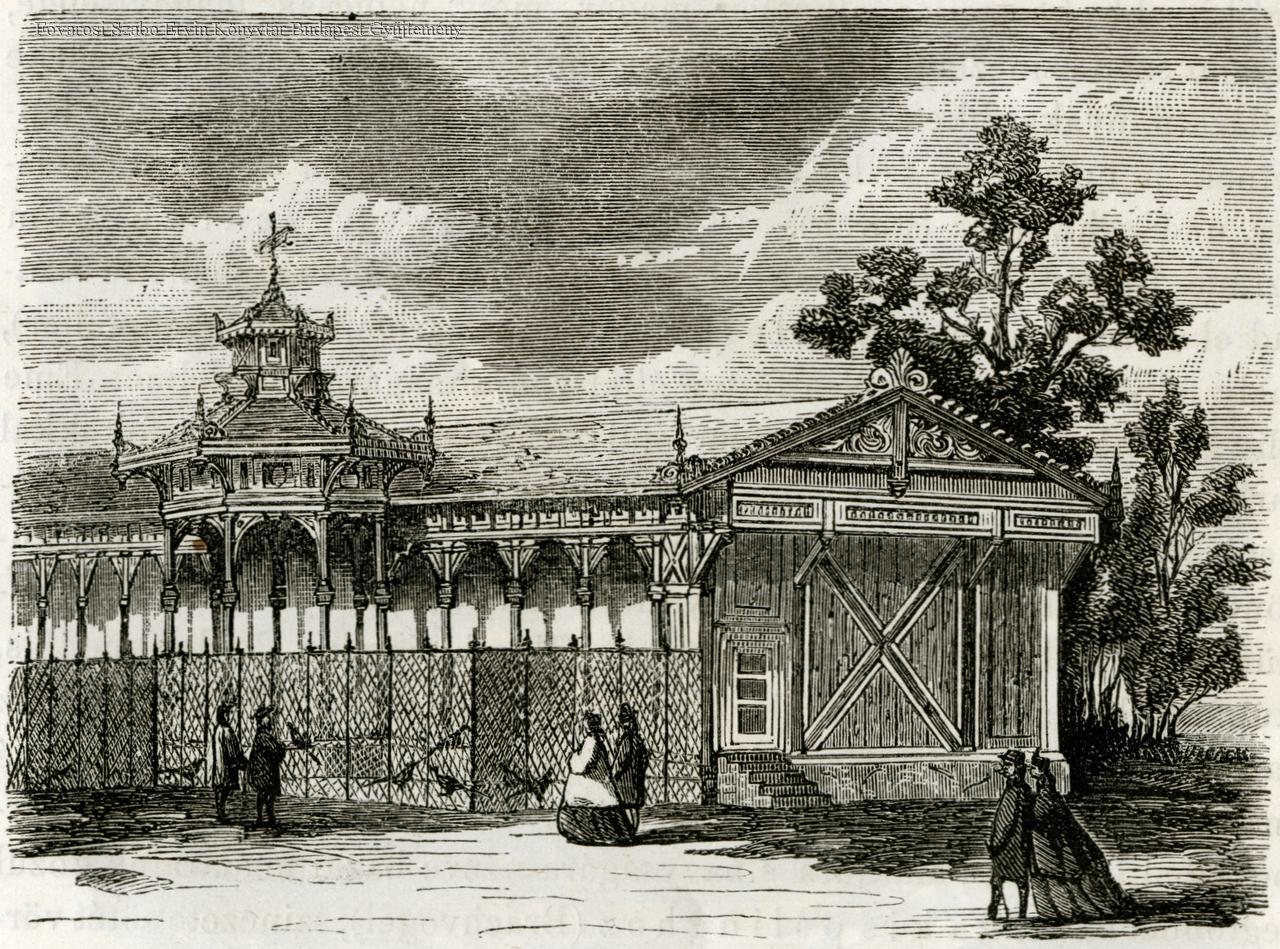
The ornate pheasant house in 1866, by Károly Rusz (Source: FSZEK Budapest Collection)
There were a total of eleven larger and several smaller buildings. The largest and most expensive building was the monkey house. In the middle, a gable surrounded by pillars rises above the risalit-like protruding cage section with a semicircular floor plan, and the gable of the side facades was filled with meticulously machined wooden inserts - according to an article published in the Művészettörténeti Értesítő in 1982. Also worth mentioning were the richly decorated, finely crafted pheasant house and the large octagonal birdcage. When designing the accommodation for the camels, they have already sought to refer to the homeland of the animals in the style of the building.
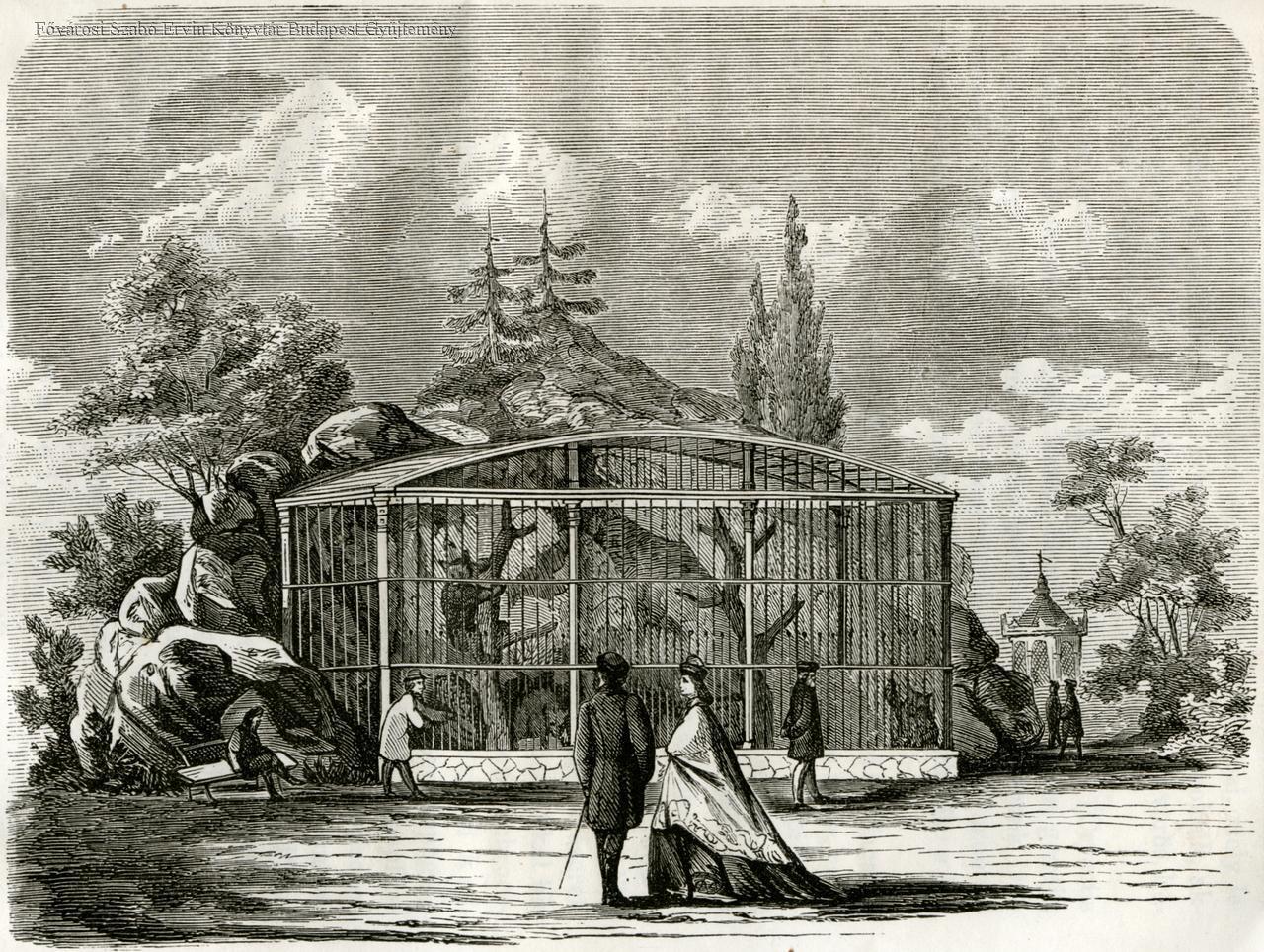
Bear Cave on the graphics of Károly Rusz (Source: FSZEK Budapest Collection)
Today, we are looking in vain for the former animal houses as they were demolished almost without exception during the reconstruction in 1912. What can still be seen in part from the old Zoo today is the Great Lake, which has been remodelled several times over the past 155 years. The Owl Castle also survived, although it was also rebuilt on a new site and remodelled. What has not changed is the location of the main entrance to the Zoo: it was already possible to enter the garden here 155 years ago, although the main gate itself was rebuilt in 1912.
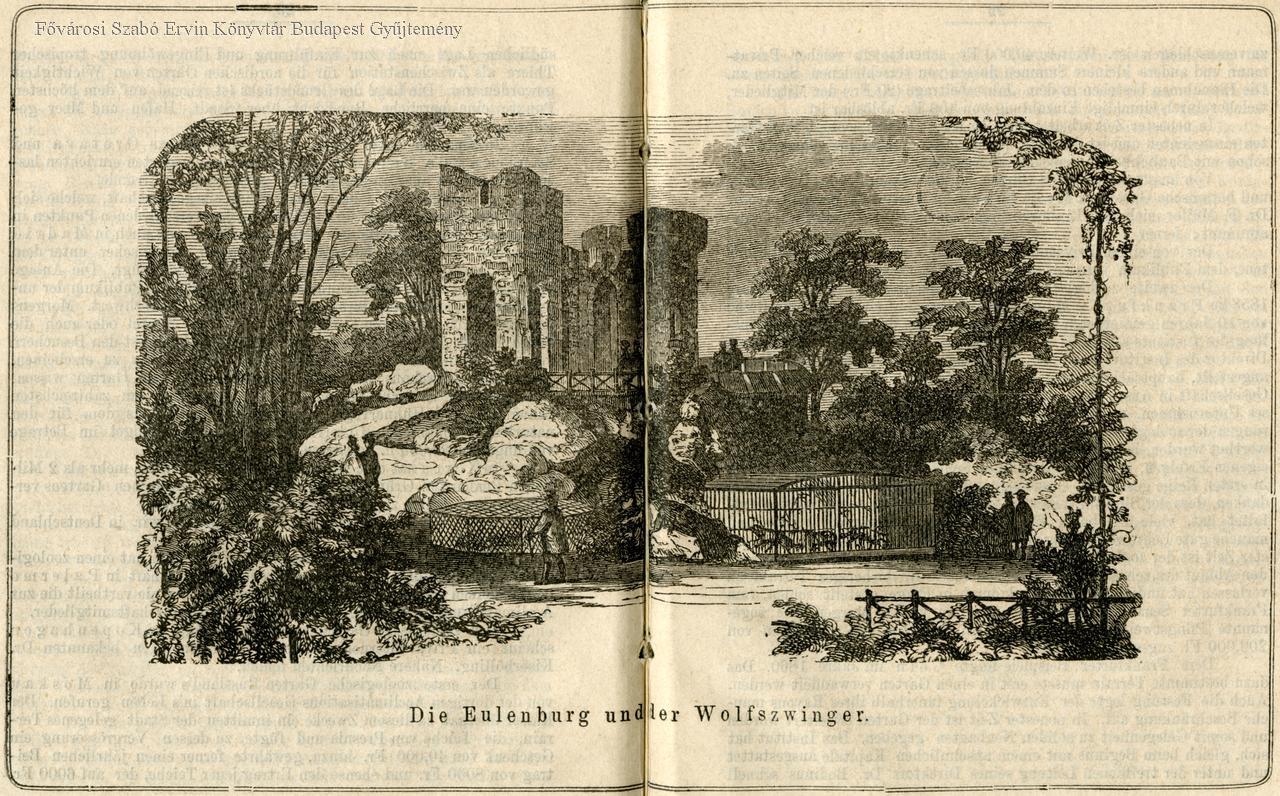
The Owl Castle from the former Pest Zoo has survived, although it was rebuilt in a new location (Source: FSZEK Budapest Collection)
The question rightly arises as to what kind of animals the public could see in the Pest Zoo in the 1860s. According to contemporary reports, about 100 species have been introduced, and the number of livestock is around 300. In addition to monkeys, lemurs, birds of prey, sheep, goats, and deer, there were also parrots and kangaroos.
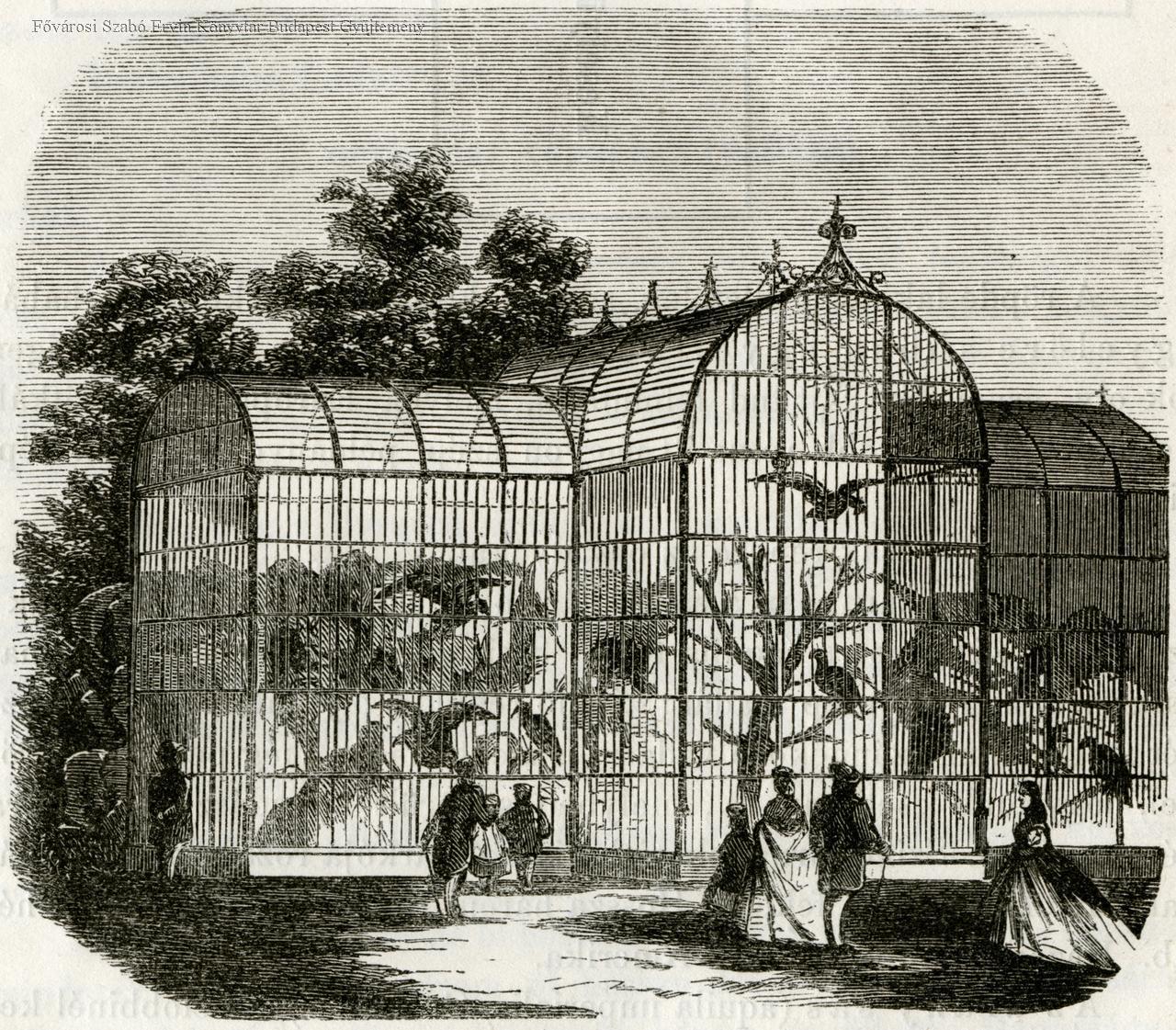 The birds of prey, in 1866, on the graphics of Károly Rusz (Source: FSZEK Budapest Collection)
The birds of prey, in 1866, on the graphics of Károly Rusz (Source: FSZEK Budapest Collection)
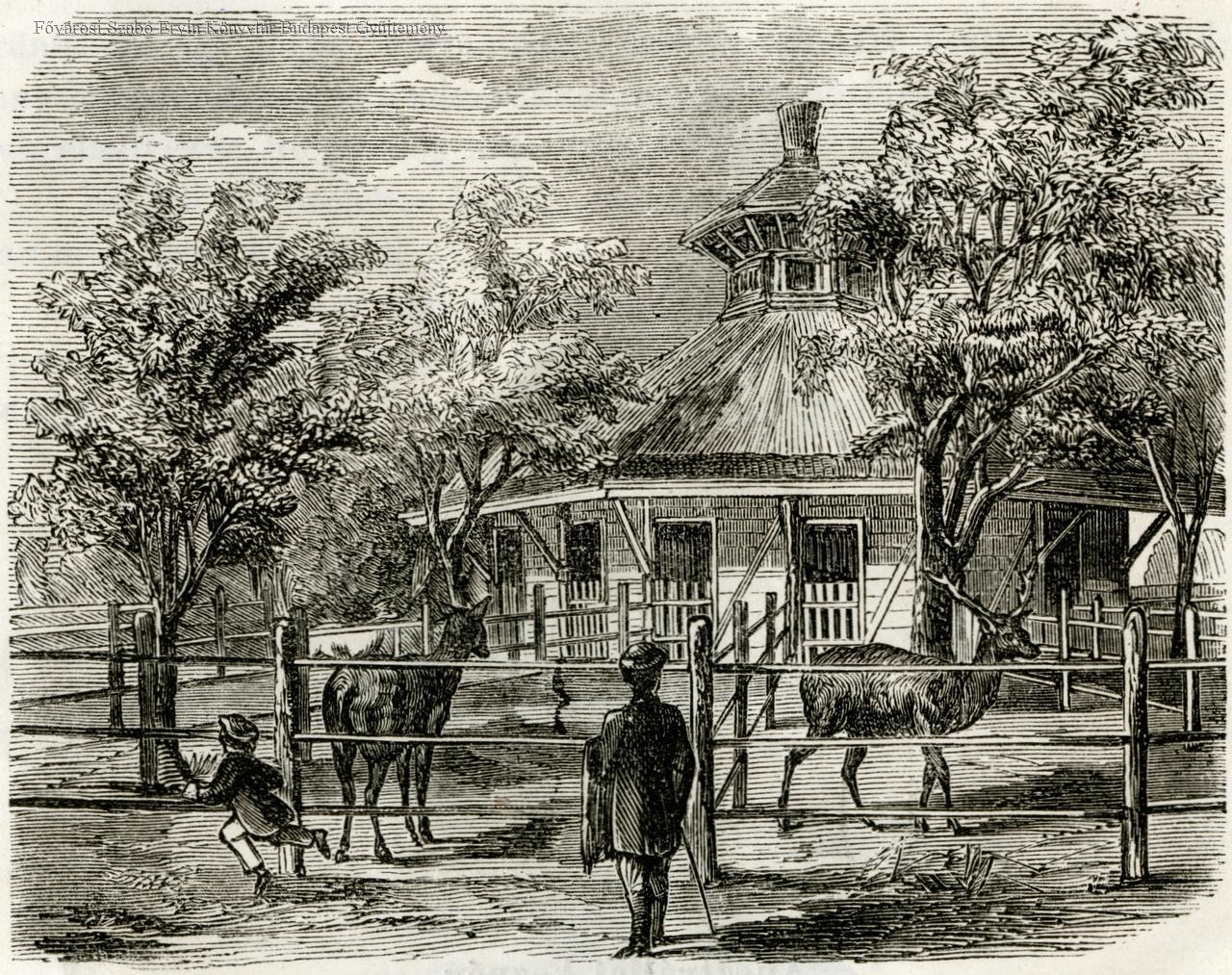
Deer pen in 1866, on the graphics of Károly Rusz (Source: FSZEK Budapest Collection)
After its opening, the Zoo quickly became popular, and in fact, it became fashionable to “support” the Zoo, that is, to give animals to them as gifts. For example, Baron Ferenc Nopcsa donated a bear, and the following year Countess Krisztina Wenckheim donated eight pheasants. However, the largest donation was the giraffe, which arrived in 1868 from Franz Joseph through the intercession of Queen Elisabeth. The giraffe house was built according to the plans of Antal Lohr. The first lion had to wait until 1870, the lion's house was built in 1876 according to the plans of Alajos Hauszmann.
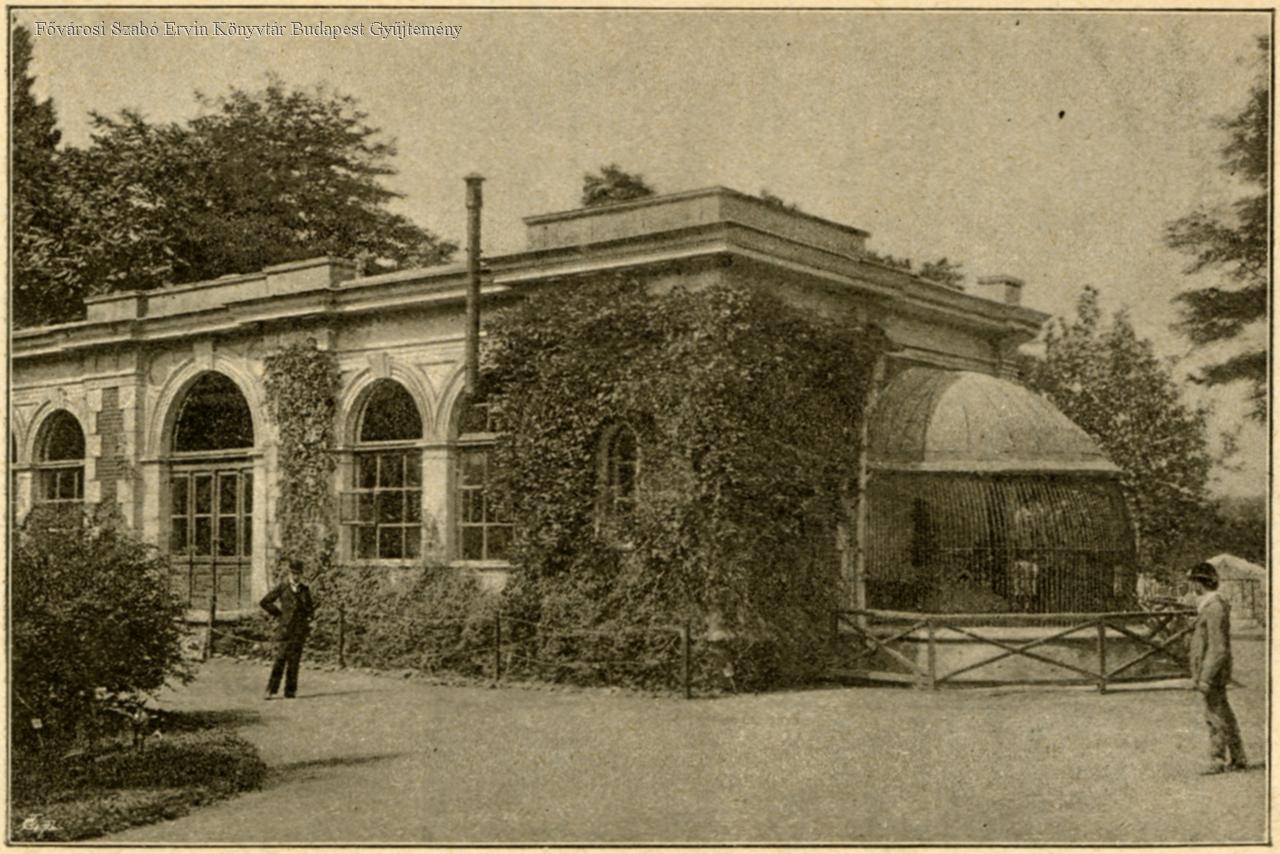
The house of large predators was built according to the plans of Alajos Hauszmann, the recording was made in 1885 (Source: FSZEK Budapest Collection)
Although the Zoo has always remained popular with visitors, the public limited company and then the Zoo and Plant Naturalisation Society, which operated the zoo from 1871, struggled with ongoing financial problems. Finally, in 1907, the capital took over the park, which by 1912 was completely remodelled and handed over to the public.
Cover photo: The former main gate of the Zoo, photographed by György Klösz in the 1890s (Source: FSZEK Budapest Collection)

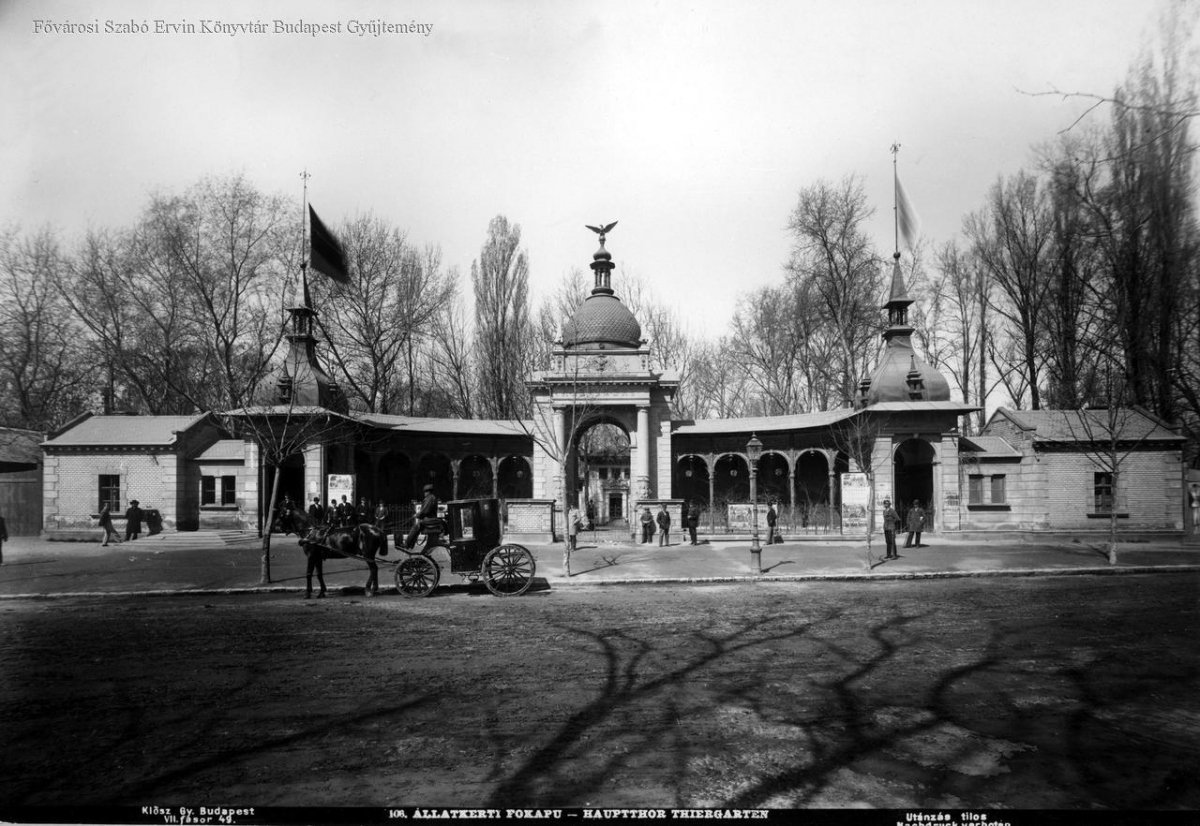





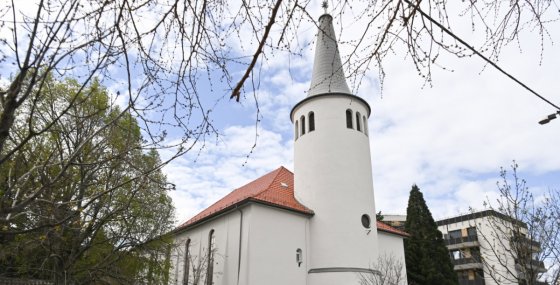




























Hozzászólások
Log in or register to comment!
Login Registration